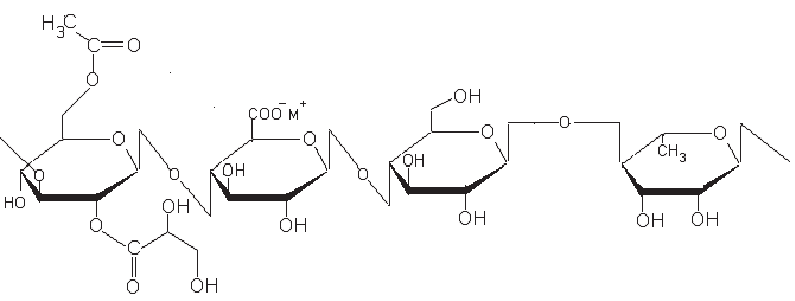What is gellan?
Gellan gum (E418) is a bacterial exopolysaccharide, prepared commercially by aerobic submerged fermentation from Sphingomonas elodea (previously called Pseudomonas elodea), in a manner similar to xanthan. discovered in 1978,1988 Approved in Japan,1992 USA full approved.
Compared with other colloids, Gellan Gum has many peculiar advantages:
1. Low dosage;
2. Excellent thermal and acid stability;
3. Good taste-releasing ability;
4. High transparency;
5. Adjustable gel elasticity and rigidity;
6. Good combinability.
Gellan gum is widely used in foods and various other fields.
(1)Typical foods prepared using gellan gum: Gelled desserts, jam, jelly, pudding, confectionery, sugarcoating of confectionery, frost of cake, filling of cake or bread, and other foods, cakes, and pet foods.
(2)Other applications: Microbiological media, capsules, perfumes, etc.
Main function and applications of Gellan Gum
| Function |
Application |
| Adhesiveness |
Sugar frost,sugar coat |
| Paint filming ability |
Succade,candy |
| Emulsibility |
Salad cream |
| Film forming ability |
Synthetic casing |
| Foam stabilizer |
Beer |
| Gelling agent |
Jelly,stuffing,dessert,fruit jam |
| Anti-graining agent |
Frozen food,syrup |
| Stabilizer |
Ice cream,salad cream |
Structure of two types of gellan gum
The molecular structure of gellan gum is a straight chain based on repeating glucose, rhamnose and glucuronic acid units. In its native, or high acyl form, two acyl substituents --- acetate and glycerate are present. Both substituents are located on the same glucose residue and, on average, there is one glycerate per repeat and one acetate per every two repeats. The high acyl form produces soft, elastic, non-brittle gels, whereas the low acyl form produces firm, non-elastic, brittle gels.
Structure of Native or High Acyl Gellan Gum

Structure of Low Acyl Gellan Gum









